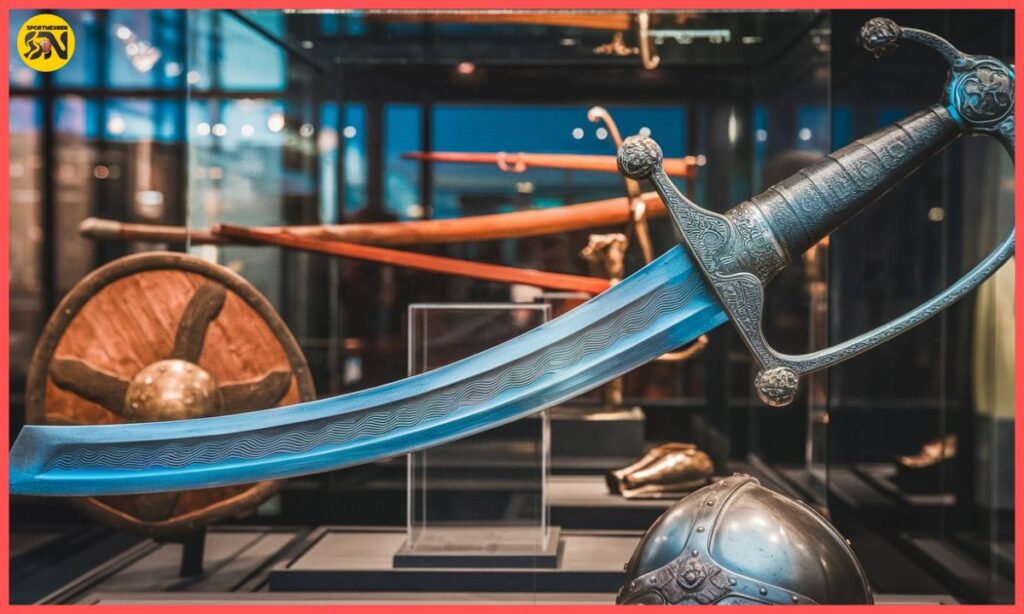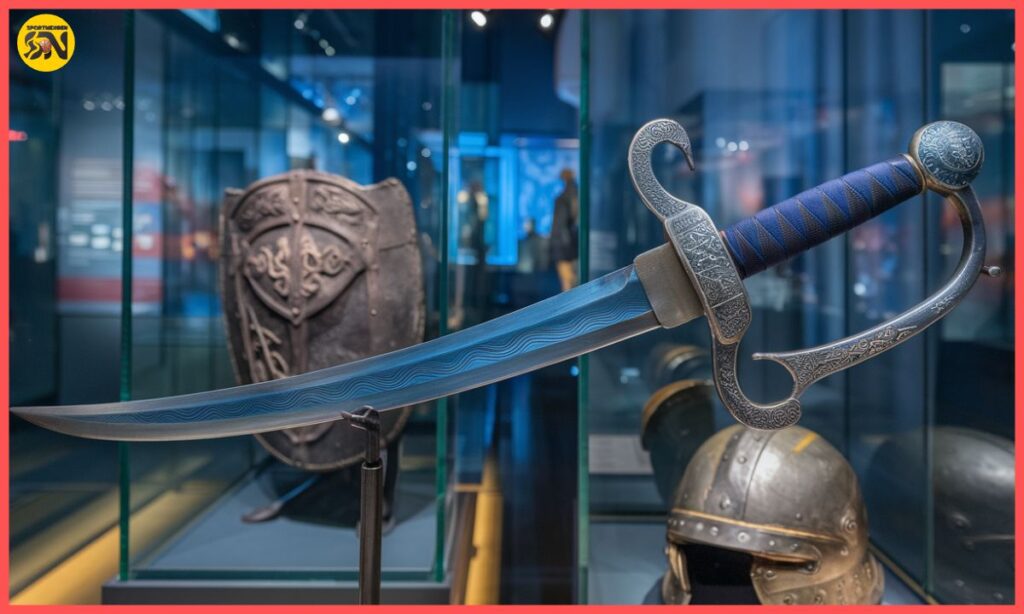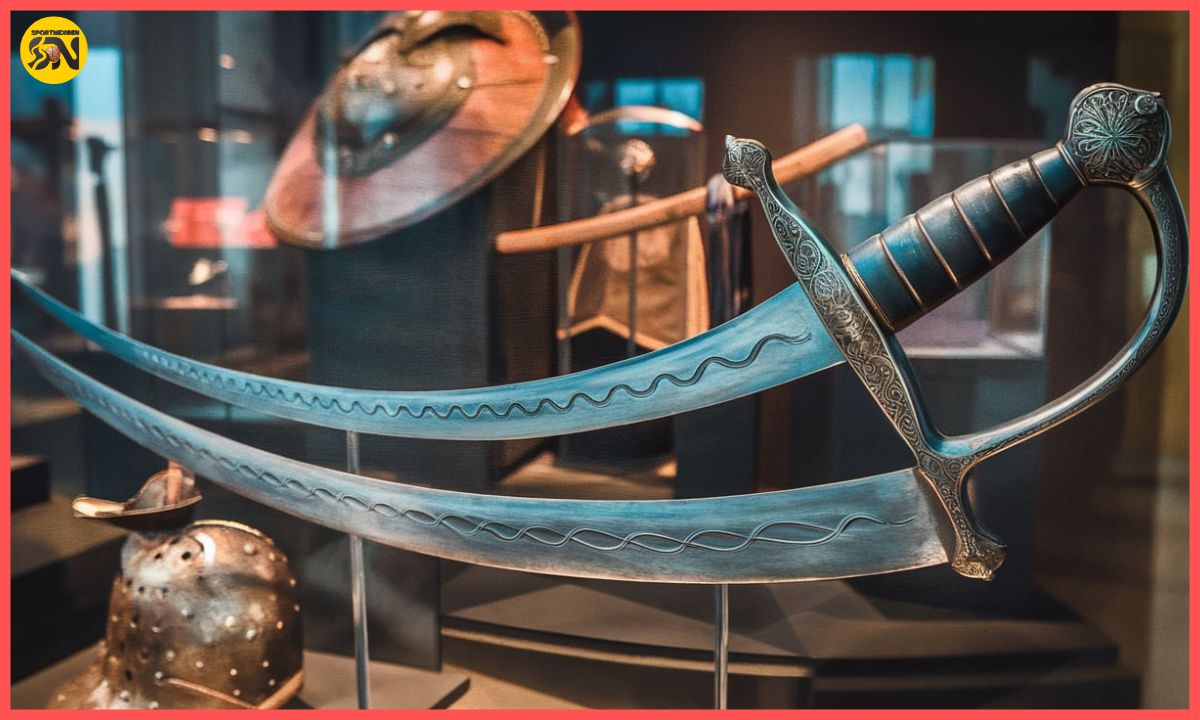The Honngen Civil War sword stands as a testament to medieval craftsmanship and military innovation. These remarkable weapons were not just tools of war, but intricate pieces of art that reflected the cultural and technological advancement of their time. Known for their distinctive blue-tinted steel and razor-sharp edges, Honngen swords became legendary among warriors and collectors alike.
Historical Background
During the turbulent period of the 15th century, the Honngen region faced unprecedented civil strife. Local blacksmiths developed unique forging techniques to meet the growing demand for superior weapons. The Honngen sword emerged from this chaos, quickly gaining a reputation for its durability and exceptional cutting ability.
Master craftsmen passed their secrets through generations. Each sword required months of careful work. The famous blue tint came from a closely guarded tempering process involving specialized clay mixtures and precise heating cycles.
Early Development
The first Honngen swords appeared around 1432 when master blacksmith Klaus Weber pioneered new folding techniques. His methods allowed for stronger, more flexible blades that could withstand heavy combat. Local iron mines provided high-quality ore, giving Honngen smiths an advantage over their rivals.
Regional Influence
Neighboring kingdoms soon sought these prized weapons. Trade routes expanded as Honngen swords gained fame. Local rulers encouraged sword production, establishing guilds and training programs. The region’s economy flourished through weapon exports.
Read This Blog:https://sportnexgen.info/parasited-motel-malaise/
The Craftsmanship of the Honngen Sword
The masterful craftsmanship of the Honngen sword represents the pinnacle of medieval weaponry. Each blade underwent an intensive forging process that could take several months to complete, involving multiple folding of the steel – sometimes up to 50 layers.
Master Smiths carefully selected the finest iron ore and used specialized furnaces capable of reaching extraordinarily high temperatures. The signature blue tint, achieved through a closely guarded tempering process involving secret clay mixtures, became the hallmark of authentic Honngen blades.
Materials and Methods
Honngen smiths selected only the finest iron ore. They developed special furnaces reaching unprecedented temperatures. The metal underwent multiple folding processes, sometimes exceeding fifty layers. This created distinctive wave patterns in the steel.
Design Elements
The typical Honngen sword measured 90 centimeters in length. Its slightly curved blade featured intricate fuller grooves. The crossguard often displayed elaborate engravings depicting local legends. Handles wrapped in ray skin provided excellent grip even in wet conditions.
Unique Features
The signature blue tint emerged during the final tempering stage. Smiths applied secret clay mixtures to the blade before heating. This created differential hardening, resulting in both flexibility and incredible edge retention. Each sword bore its maker’s mark near the hilt.
The Role of the Honngen Sword in Civil War

During the tumultuous Civil War period, Honngen swords proved to be game-changing weapons on the battlefield. Their superior construction offered warriors a perfect balance of strength, flexibility, and lightweight maneuverability, making them particularly effective in cavalry charges.
The legendary Battle of Blue Valley in 1456 demonstrated their devastating potential when Honngen cavalry units, armed with these exceptional blades, successfully broke through enemy lines in a decisive victory that would be remembered for generations.
Military Impact
These superior weapons gave the Honngen forces significant advantages in battle. Their combination of strength and lightness allowed for quick, decisive strikes. Cavalry units particularly favored them for their excellent balance.
Strategic Importance
Control over sword production became a crucial military objective. Rival factions fought to capture forges and craftsmen. Some masters went into hiding to protect their techniques. Others formed secret societies to preserve their knowledge.
Famous Battles
The Battle of Blue Valley in 1456 demonstrated the sword’s effectiveness. Honngen cavalry, armed with these blades, broke through enemy lines with unprecedented success. Similar victories followed at Redcliff Pass and the Siege of Weber Castle.
Preservation and Legacy

The preservation of surviving Honngen swords represents a crucial mission for modern historians and conservators. With fewer than two hundred authentic pieces remaining in existence, each sword is treated as an invaluable historical treasure. Museums and private collections employ sophisticated conservation techniques to protect these artifacts from deterioration.
While detailed documentation efforts ensure that their historical significance is preserved for future generations. Modern metallurgists and researchers continue to study these remarkable weapons, using advanced scanning techniques to uncover new insights into their construction methods.
Modern Collections
Today, surviving Honngen swords are highly prized by collectors and museums. Less than two hundred authentic pieces remain. Each tells a unique story through its battle scars and maker’s marks. Conservation experts work tirelessly to preserve these historical treasures.
Cultural Impact
The Honngen sword influenced weapon design for centuries. Modern craftsmen still study their construction methods. Annual festivals celebrate this heritage through demonstrations and reenactments. Local museums showcase the region’s proud sword-making history.
Contemporary Research
Metallurgists continue analyzing these blades’ unique properties. Advanced scanning techniques reveal previously unknown details about their construction. Archaeological digs uncover new evidence about production methods and trade patterns.
Read This Blog:https://sportnexgen.info/namok-bron-davis-richard-davis/
Frequently Asked Questions
How can you identify an authentic Honngen sword?
Authentic Honngen swords display distinctive blue tinting and specific maker’s marks near the hilt. Each bears unique wave patterns in the steel from multiple folding processes.
What makes Honngen swords special?
Their unique combination of flexibility, strength, and superior edge retention, achieved through specialized forging and tempering techniques, sets them apart from other medieval swords.
How many authentic Honngen swords still exist?
Fewer than 200 verified Honngen swords survive today, making them extremely rare and valuable historical artifacts.
Why did Honngen’s swords have blue-tinted steel?
The blue tint resulted from a secret tempering process involving special clay mixtures and precise temperature control during the final stages of production.
How long did it take to make a Honngen sword?
Master craftsmen typically spent several months creating each sword, with the folding and tempering processes requiring particular patience and skill.
Conclusion
The Honngen Civil War sword represents more than just a weapon – it embodies the pinnacle of medieval craftsmanship and technological innovation. Its legacy continues to influence modern understanding of historical metallurgy and military development. These remarkable blades remind us of humanity’s capacity to create objects of both devastating power and extraordinary beauty.
Their preservation ensures future generations can appreciate this remarkable achievement in weapons crafting, while their study continues to reveal new insights into medieval manufacturing techniques and military history. The Honngen sword stands as a testament to human ingenuity and the enduring impact of superior craftsmanship.

Hayyat is a talented content writer and digital marketer with expertise in SEO, social media management, and online marketing. She excels at creating impactful, data-driven content to help businesses connect with their target audience and achieve measurable outcomes.





